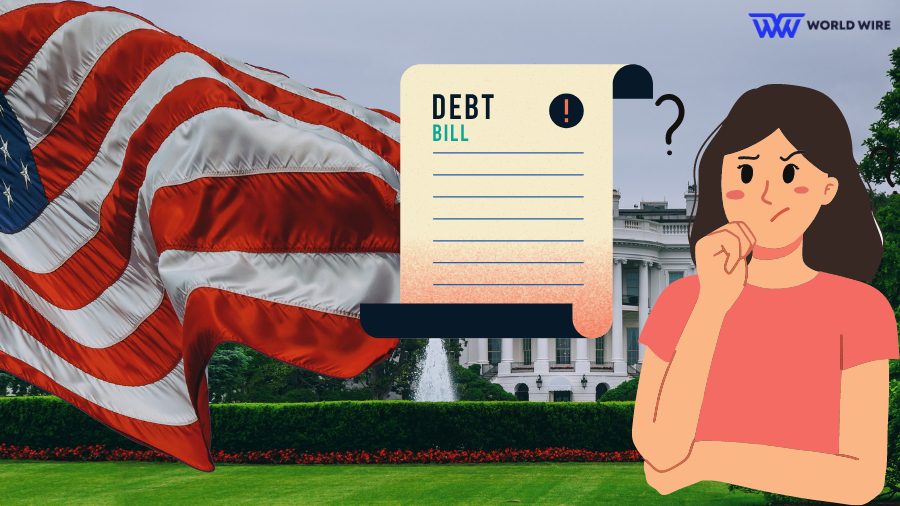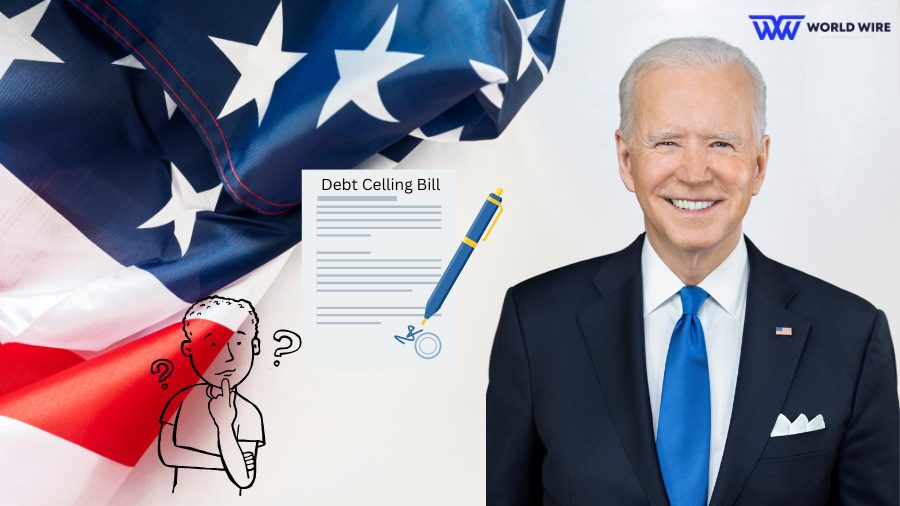United States President Joe Biden and House Speaker Kevin McCarthy ended a week-long negotiated debt ceiling bill deal on Sunday.
Now, the debt ceiling bill seeks to get approval in both chambers of Congress, and the President has insisted on passing the bill to prevent likely catastrophic defaults in the U.S. debt repayment.
So, what does the deal provide? Let’s read and find out.
What’s In The U.S. Debt Ceiling Deal?
The bill, also known as the debt limit, provides to reduce or limit the total amount of funds the federal government can borrow to pay its bills. This includes paying government employees and the U.S. military, issuing Social Security and Medicare funds, and paying interest on the national debt and tax refunds.
The limit currently is around $31.4 Trillion (£25.2 Trillion). However, this limit was violated in January, and the Treasury Department used “extraordinary measures” to provide the government with more funds while declaring other measures.
Historically, this limit is often raised or suspended by the U.S. Congress voting so that the government can borrow more or adjust as required. But in recent years, as the parties have more contradicting opinions, Congress seems to have differing views on a single term.
Republicans introduced the U.S. debt ceiling bill last month to control spending for key agencies at 2022 levels during the next financial year and limit growth to 1% yearly over the next decade.
The submitted bill repealed important takeaways of the Biden administration, including student loan forgiveness, tax incentives for E-Bikes, etc. The bill also suggested more work requirements for people receiving healthcare and food welfare benefits.
President Biden reached the agreement on Sunday, formulating and updating many of the original provisions of the bills. At the same time, members of both Democratic and Republican parties have expressed concern about the agreement.
Some Republicans assume the deal does not go far enough in limiting government spending, while some Democrats are distressed over the additional work requirements from benefit recipients.
What does the US debt ceiling deal now have?

Here are the updated provisions of the U.S. debt ceiling deals.
Debt ceiling suspended until 2025
The debt ceiling deal proposed on Sunday has not raised the limit to a certain level but suspended it completely until 2025. This means the government will pay its bills until the date and probably raise the ceiling after the presidential election.
Limits on spending, but not a defense
In the original bill, Republicans wanted to reduce overall spending for ten years and increase defense spending by limiting other budgets.
The debt ceiling agreement keeps non-defense spending flat until next year, with a 1% rise in 2025. The government spending would be reduced by at least $1 Trillion. However, this implication still needs to be clarified.
Defense expenditure would increase by $886 billion, amounting to a 3% rise this year. There is no budget limit after 2025. Also, government spending on medical care for the military would increase.
Unspent Covid funds returned
Republicans asserted the relief funds that were unspent to be returned as the public health emergency ended in May. The Congressional Budget Department has estimated this amount to be around $30 billion.
Funds to implement tax rules on wealthy Americans
In the original debt ceiling bill, the Republicans sought to secure $80 billion for the Internal Revenue Service (IRS), claiming the fund would be used to hire an army of agents to audit rich Americans, and it would be used to modernize the system.
However, in the present deal, the President agreed to reduce $20 billion and use this fund for other non-defense spending.
Easy to issue energy project license
Democratic West Virginia Senator Joe Manchin has long supported this provision. The new debt ceiling deal proposes simplifying the procedure for issuing licenses for fossil fuels and renewable energy projects, thus facilitating environmental progress.
What happens if the U.S. defaults on its debt?
Treasury Secretary Janet Yellen has noted that without more borrowing, the government will have insufficient money to fulfill all of its financial responsibilities.
If the U.S. defaults on its debt, the federal government would be unable to pay the salaries and pension of federal and military employees and the Social Security funds that millions of low-income households and pensioners in the country rely on.
Several companies and charities that run on government funds would be dead. If the federal government fails to make interest payments on its debt, it will bankrupt the country.
Table of Contents







Add Comment